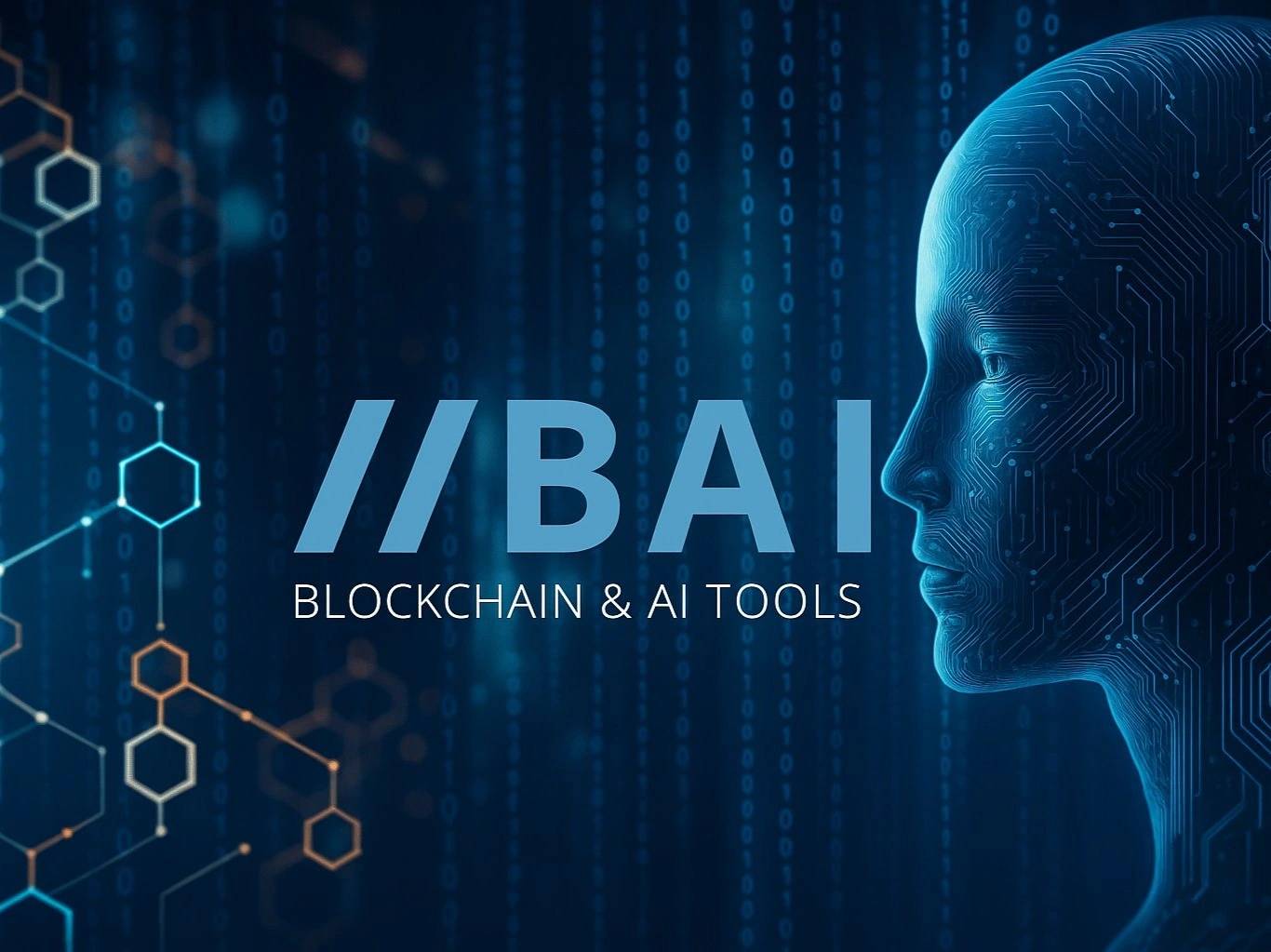위키 구독하기
Share wiki
Bookmark
Block AI
Block AI
Block AI는 인공지능 도구를 블록체인 기술과 통합하여 다양한 AI 서비스에 대한 분산형 접근 지점을 제공하는 플랫폼입니다. 이 프로젝트는 최종 사용자와 분산형 애플리케이션(dApp) 모두가 단일 인터페이스와 토큰 기반 결제 시스템을 통해 AI 모델을 활용할 수 있도록 하는 데 중점을 둡니다. [1]
개요
블록 AI (BAI)는 다양한 AI 도구를 탈중앙화 인터페이스 내에 통합한 멀티체인 플랫폼입니다. 사용자 등록 및 구독료가 필요 없어 개인과 조직의 AI 접근성을 높이고자 합니다. 중앙 집중식 데이터 저장소를 사용하지 않아 데이터 보안 및 사용자 소유권에 대한 우려를 해소합니다.
이 시스템은 블록체인 기술을 사용하여 AI가 생성한 결과물을 영구적이고 투명하게 저장합니다. 주요 기능 중 하나는 스마트 계약 내 콜백 메커니즘을 통합한 것으로, 스마트 계약이 AI 작업을 요청하고 결과를 자동으로 수신하여 추가 처리할 수 있도록 합니다. 이를 통해 블록체인 환경 내 자동화 및 실시간 의사결정을 위한 새로운 가능성이 열립니다.
블록 AI는 유튜브 요약 및 브레인스토밍 지원과 같은 간결하고 작업 특정적인 도구를 제공합니다. 또한 플랫폼 내 서비스 요금 지불을 위한 자체 토큰 출시를 계획하고 있습니다. BAI의 의사결정은 토큰 보유자가 아닌 활동 사용자에 의해 이루어지므로, 도구를 정기적으로 사용하는 사람들에 의해 개발 방향이 결정됩니다. [2]
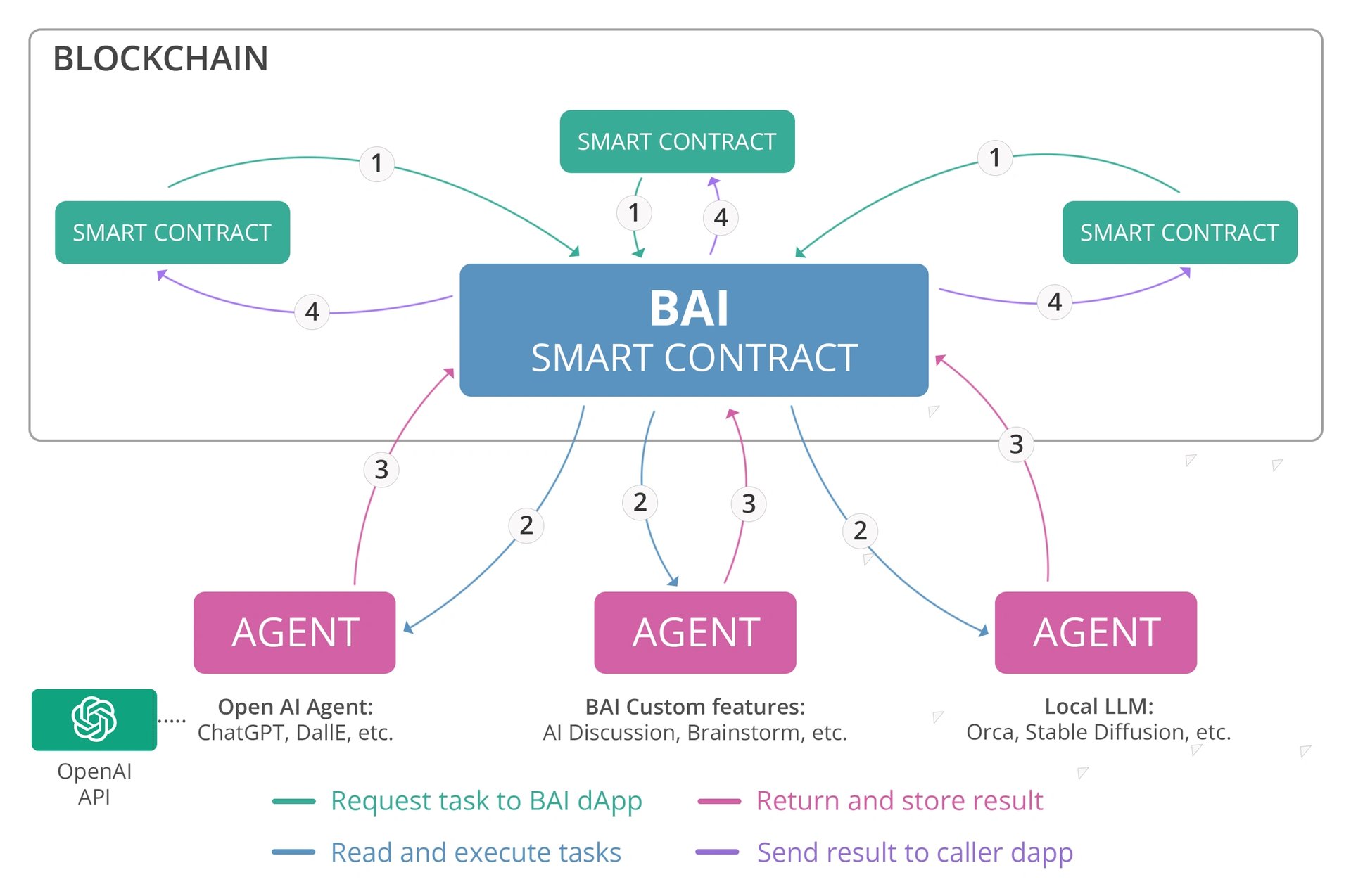
특징
거버넌스
BAI DAO는 기존 토큰 기반 DAO와는 다른 사용자 중심 거버넌스 모델을 사용합니다. 의사결정 권한에 토큰 보유량을 의존하는 대신, 플랫폼은 활동적인 사용자의 의견을 중시합니다. 거버넌스 참여는 플랫폼 도구의 실제 사용량에 따라 결정되므로, 플랫폼을 더 자주 사용하는 사용자일수록 더 큰 영향력을 갖게 됩니다.
거버넌스는 정기적인 설문 조사를 통해 진행되며, 투표권은 사용자가 플랫폼을 이용한 빈도에 따라 가중치가 부여됩니다. 예를 들어, 도구를 500번 사용한 사용자는 한 번 사용한 사용자보다 더 큰 영향력을 갖게 됩니다. 이러한 설문 조사는 도구 개발 우선 순위, 인터페이스 조정, 토큰 분배 변경, 성장 계획 및 나머지 4,000,000개 BAI 토큰의 할당 등을 다룰 수 있습니다.
개발팀은 설문 조사 결과를 검토하고 플랫폼의 방향을 설정합니다. 이러한 구조는 변경 사항이 활동적인 사용자 기반의 요구와 선호도를 반영하여 보다 실용적이고 포괄적인 개발을 지원하도록 설계되었습니다. [3] [4]
서비스
YouTube 요약 도구 (YouTube Summarizer)
YouTube 요약 도구는 긴 비디오를 간결하고 읽기 쉬운 텍스트 요약으로 축약합니다. 이 도구는 사용자가 전체 실행 시간을 시청하지 않고도 비디오 콘텐츠에서 주요 정보를 추출하는 데 도움이 되도록 설계되었습니다. 이 도구는 학술 연구, 경쟁 분석, 교육 목적 또는 일반적인 지식 수집에 사용할 수 있습니다. 특히 사용자가 많은 양의 콘텐츠를 빠르게 처리해야 하는 시간에 민감한 환경에서 유용합니다. [5]
브레인스토밍 도구
브레인스토밍 및 계획 도구는 구조화된 아이디어 생성과 초기 단계 계획을 지원합니다. 콘텐츠 제작, 제품 개발 또는 프로젝트 관리에 참여하는 개인을 위해 고안되었습니다. 사용자는 프롬프트 또는 주제를 입력할 수 있으며, 이 도구는 개요, 목록 또는 확장된 개념을 반환합니다. 비기술적 배경을 가진 사용자도 사용하기 쉽도록 설계되어 생각을 정리하고, 새로운 방향을 탐색하거나, 더 복잡한 작업을 준비하는 데 접근 가능한 방법을 제공합니다. [5]
OpenAI API
OpenAI API 접근 서비스를 통해 사용자는 Block AI 플랫폼을 이용하여 GPT-4와 같은 고급 언어 모델을 사용할 수 있습니다. 이를 통해 사용자는 OpenAI에 직접 계정을 생성하거나 별도의 청구 절차를 관리할 필요가 없습니다. 플랫폼의 기본 토큰을 사용하여 접근이 처리되므로 코딩 지원, 자연어 질의, 문서 요약 등의 사용 사례에 대해 고성능 AI 모델과 더 쉽게 상호 작용할 수 있습니다. [5]
LLM 접근
대체 언어 모델 접근 서비스를 통해 사용자는 gpt4all 및 Orca Mini와 같은 모델을 이용할 수 있습니다. 이러한 모델은 텍스트 생성, 감정 분석, Q&A 지원, 챗봇 개발 등 OpenAI 도구와 유사한 기능을 제공합니다. 대안을 제공함으로써 플랫폼은 단일 제공업체에 대한 의존성을 줄이고 다양한 성능, 라이선스 또는 개인 정보 보호 요구 사항을 가진 사용자에게 사용 가능한 애플리케이션의 범위를 넓힙니다. [5]
이미지 생성
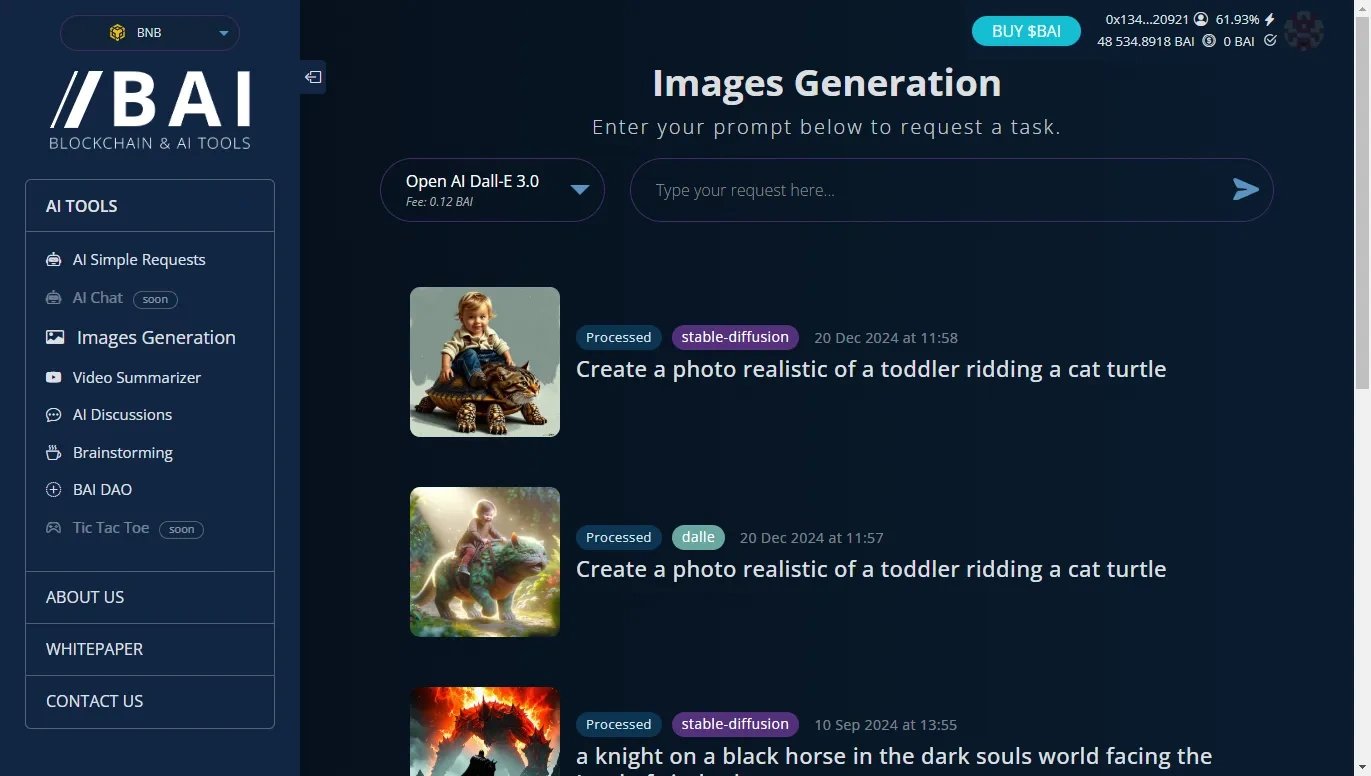
프롬프트-이미지 워크플로우 기능을 사용하면 사용자가 언어 모델로 텍스트 프롬프트를 생성한 다음 해당 프롬프트를 이미지 생성 도구와 함께 사용하여 사용자 지정 시각적 콘텐츠를 만들 수 있습니다. 예를 들어 사용자가 OpenAI API를 통해 자연어로 개념을 설명하고 그 출력을 사용하여 호환되는 이미지 생성 서비스를 사용하여 아트워크, 제품 목업 또는 홍보 이미지를 생성할 수 있습니다. 이러한 모듈식 워크플로우를 통해 비디자이너도 최소한의 노력으로 미디어 자산을 생성할 수 있습니다. [5]
스마트 계약 통합
스마트 계약 AI 통합 기능을 사용하면 블록체인 기반 스마트 계약이 AI 작업을 트리거하고 자동으로 응답을 받을 수 있습니다. 이를 통해 계약은 실시간 데이터 또는 AI가 생성한 통찰력에 따라 적응할 수 있습니다. 예를 들어, 스마트 계약은 감정 분석 작업을 시작하고 결과를 받아 해당 분석을 기반으로 동작을 조정할 수 있습니다. 이 기능은 분산 시스템 내에서 더 복잡한 논리와 더 큰 적응성을 지원합니다. [5]
커뮤니티 중심 개발
커뮤니티 중심 도구 개발 프로세스는 정기적인 설문 조사를 통해 플랫폼 사용자의 피드백을 수집합니다. 토큰 가중치 모델과 달리, 참여는 사용량 가중치 방식을 사용합니다. 즉, 플랫폼과 더 많이 상호 작용하는 사용자일수록 더 큰 영향력을 갖습니다. 설문 조사는 도구 제안, 사용자 인터페이스 업데이트, 토큰 분배 전략 및 플랫폼 확장 노력 등을 다룰 수 있습니다. 이러한 접근 방식을 통해 새로운 기능과 도구가 참여 사용자의 실질적인 요구 사항과 일치하도록 합니다. [5]
에이전트
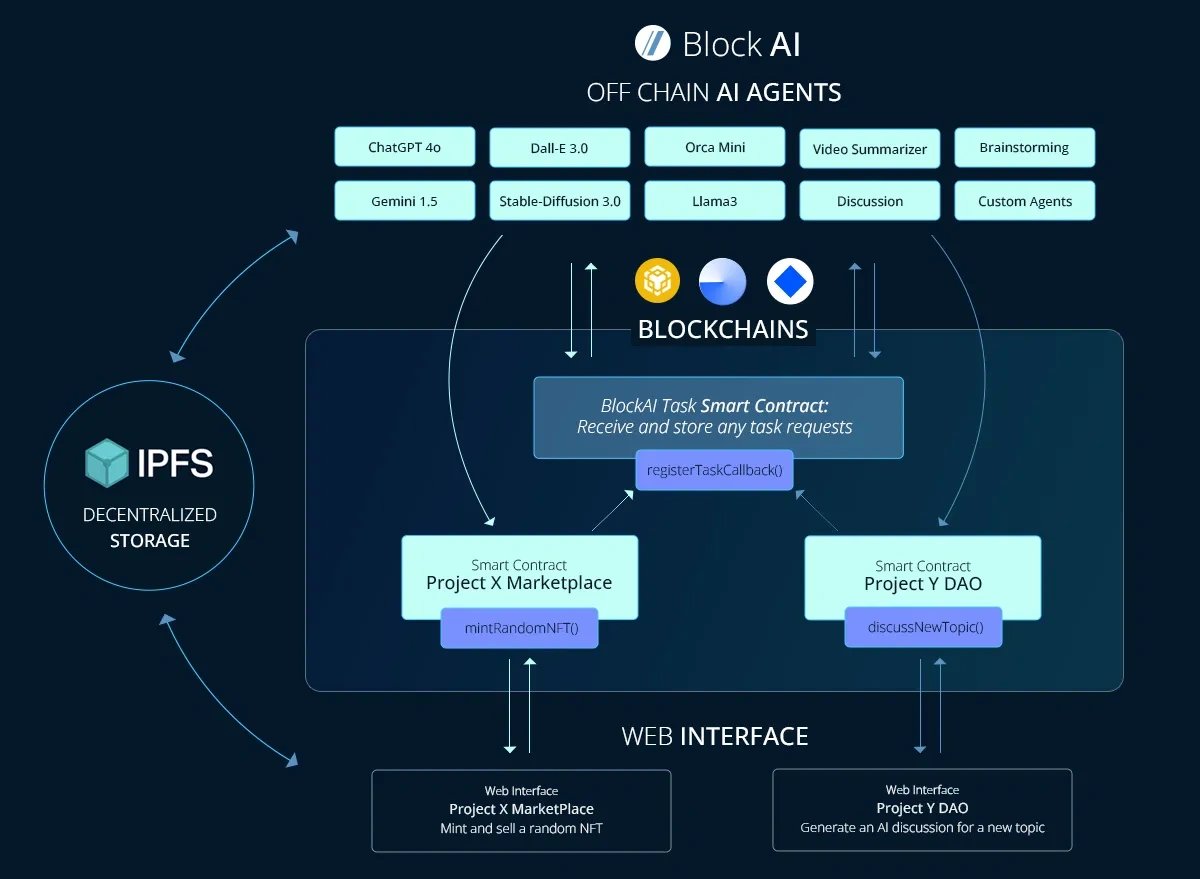
블록 AI는 자연어 처리, 이미지 생성, 비디오 요약 및 협업 도구를 포함한 다양한 작업을 처리하도록 설계된 특수 에이전트의 프레임워크를 포함합니다. 이러한 에이전트는 분산 시스템 내에서 작동하며 작업 최적화 설계를 통해 특정 사용자 요구를 충족하도록 맞춤화됩니다. 모든 에이전트는 블록체인 인프라를 사용하는 분산 프레임워크에서 작동하도록 구축되었습니다. 이러한 설계는 데이터 투명성, 보안 및 사용자 소유권을 보장합니다. 에이전트 프레임워크는 다양한 작업을 처리하고 혁신적인 요약 및 협업적 문제 해결 방법을 도입하면서 다재다능합니다. [6]
LLM 에이전트
LLM(대규모 언어 모델) 에이전트는 여러 가지 구별되는 모델을 포함합니다. GPT-4 기반의 ChatGPT 에이전트는 질문에 답하고 서면 콘텐츠를 생성하는 등 다양한 텍스트 기반 작업을 처리할 수 있는 범용 모델입니다. Orca 2 Mini는 효율적이고 빠른 응답을 제공하는 오픈소스 모델로, 속도가 중요한 사용 사례에 적합합니다. Gemini 1.5는 더 복잡하거나 뉘앙스 있는 작업을 위해 설계되었으며, 더 깊이 있는 분석 기능을 제공합니다. Llama 3.1은 확장 가능한 애플리케이션을 위해 성능과 경제성을 균형 있게 갖춘 비용 효율적인 옵션을 제공합니다. [6]
이미지 생성 에이전트
이 플랫폼은 이미지 생성을 위해 DALL-E 3(달리 3) 및 Stable Diffusion 3(스테이블 디퓨전 3)을 지원합니다. DALL-E 3은 텍스트 설명으로부터 고품질의 상세한 이미지를 생성할 수 있으며, 디자인이나 광고와 같은 창작 분야에서 유용합니다. Stable Diffusion 3은 생성 과정에 대한 제어 기능을 더욱 강화하여 사용자가 시각적 출력물에 대한 목표 지향적인 조정이나 개선을 할 수 있도록 합니다.
YouTube 요약 에이전트
YouTube 요약 에이전트는 비디오 링크를 처리하여 간략한 텍스트 요약으로 변환합니다. 이 기능은 사용자가 비디오를 전체적으로 시청하지 않고도 빠르게 관련성을 평가하는 데 도움이 되도록 설계되었습니다. 계획된 확장에는 선택한 YouTube 채널의 요약 자동 전달이 포함되어 정기적인 콘텐츠 소비의 편의성을 높입니다. [6]
토론 도구 에이전트
토론 도구 에이전트는 GPT-4를 사용하여 특정 주제에 대한 양방향 대화를 시뮬레이션합니다. 이러한 에이전트는 사용자가 여러 관점을 제시함으로써 복잡한 문제를 탐구하는 데 도움이 되도록 고안되었습니다. 향후 개발에는 다양한 관점을 제공하기 위해 다양한 언어 모델을 통합하는 것이 포함됩니다. [8]
브레인스토밍 도구 에이전트
브레인스토밍 도구 에이전트는 여러 이해관계자의 참여를 시뮬레이션하여 그룹 아이디어 발상을 촉진합니다. 이 도구는 특정 주제에 대한 에이전트 주도 토론을 생성하고, 결과를 시각적으로 요약하는 마인드 맵으로 세션을 마무리합니다. 이 도구는 구조화된 아이디어 탐색을 지원하며 초기 단계 계획 또는 전략 개발에 적용됩니다. [6]
질문-옵션-기준 (QOC) 모델
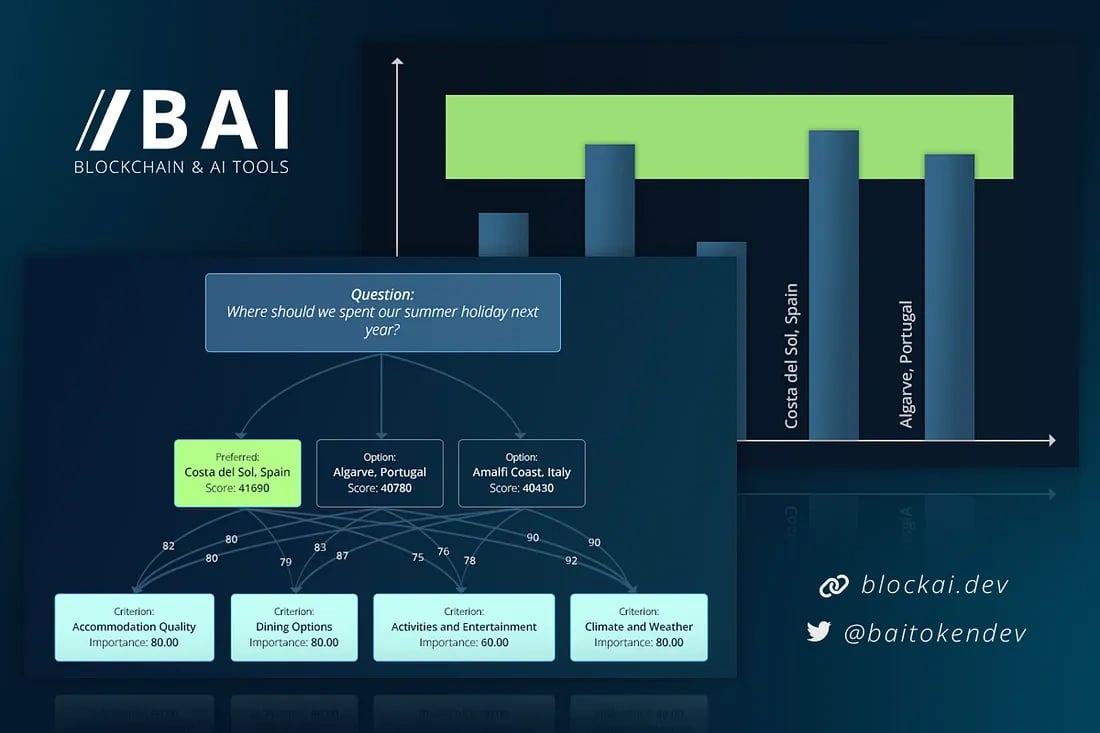
Block AI는 질문-옵션-기준(QOC) 프레임워크를 통합하여 AI가 생성한 답변의 구체성과 설명 가능성을 향상시킵니다. 전통적으로 구조적 의사결정 분석에 사용되는 이 프레임워크는 AI 시스템이 광범위한 가능성을 제공하는 것을 넘어 특정하고 맞춤화된 권장 사항을 제공하는 데 도움이 됩니다. [9]
QOC란 무엇인가?
QOC 프레임워크는 UI/UX 디자인에서 시작되어 특히 그룹 설정에서 일반적인 의사결정 지원으로 확장된 구조적 방법론입니다. 잠재적인 옵션, 관련 기준을 식별하고, 기준 중요도를 평가하며, 기준에 따라 옵션을 평가하고, 선호하는 옵션을 계산하는 과정을 포함합니다. 유연성 덕분에 여러 이해관계자가 기여하고 평가하는 분산된 시나리오에서 효과적이며, 중복을 피하기 위해 기여가 통합됩니다. 이 프레임워크는 의사결정 과정을 본질적으로 문서화하여 투명성을 보장합니다. [9]
BlockAI의 QOC 구현
Block AI는 지능형 에이전트를 사용하여 QOC 프레임워크를 구현합니다. 이 시스템은 질문에 답하기 위해 관련 이해관계자를 에이전트로 인스턴스화하여 사용자가 적절한 이해관계자를 식별할 수 있도록 컨텍스트를 제공할 수 있게 합니다. 에이전트는 옵션과 기준을 제안하며, 시스템은 이를 자동으로 통합합니다. 그런 다음 에이전트는 기준의 중요성과 옵션이 기준을 얼마나 잘 지원하는지 평가합니다. 이러한 이중 평가는 수식을 사용하여 처리되어 선호하는 옵션을 계산하고 명확한 권장 사항을 제공합니다. [9]
설명 가능한 AI에 대한 기여
블록 AI의 QOC 사용은 투명성을 높여 설명 가능한 AI(XAI)에 기여합니다. QOC의 구조적 특성은 정의된 질문, 옵션 및 기준을 통해 의사 결정을 체계화하여 프로세스 추적을 가능하게 합니다. 이 아키텍처는 구조화된 QOC 계층과 LLMs를 통합합니다. QOC 계층은 에이전트 기반 프로세스를 조율하여 투명성을 높이는 반면, LLM 계층은 초기 입력을 생성하지만 설명 가능성이 낮습니다. QOC 계층을 통해 통계 분석이 가능하고, 중요한 기준을 식별하며, 비슷하게 좋은 옵션을 식별하는 것을 지원합니다. 목표는 설명 가능한 QOC 계층에 대한 의존도를 높이는 것입니다. [9]
통계 분석 및 설명 가능성
QOC 프레임워크는 통계적 평가를 통해 권장 사항을 설명할 수 있도록 합니다. 결과는 기준에 대한 옵션 및 점수를 보여주는 그래프를 통해 시각화하여 성능과 유사하게 좋은 대안을 강조할 수 있습니다. 시스템은 투명성을 위해 참여하는 에이전트와 역할을 나열합니다. 통합된 입력과 초기 제안을 분석하여 기여가 어떻게 통합되었는지 보여줍니다. 표준 편차를 사용한 일관성 분석은 에이전트 간의 합의를 보여줍니다. 중요도와 표준 편차를 분석하여 중요한 기준을 식별합니다. 선호하는 옵션과 통계적으로 구별할 수 없는 옵션은 유사하게 좋은 대안으로 식별됩니다. [9]
BAI
BAI 토큰은 Block AI 플랫폼 내의 유틸리티 토큰으로 다양한 서비스와 도구에 대한 접근을 가능하게 합니다. 사용자는 암호화폐 거래소에서 BAI 토큰을 구매하거나 플랫폼의 도구 개발, 버그 식별, 홍보 및 에이전트 운영에 기여할 수 있습니다.
토큰 경제는 장기적인 지속 가능성과 공정성을 지원하도록 구축되었습니다. 6,000,000개의 BAI 토큰이 공급 안정성을 유지하기 위해 수년에 걸쳐 점진적으로 출시될 예정입니다. 초기 토큰 판매는 스마트 계약을 통해 이루어졌으며, 첫 해에는 토큰이 개당 1달러의 고정 가격으로 제공되었습니다. BAI의 배분은 다음과 같습니다: [7]
- BAI DAO: 80%
- 팀: 10%
- 1차년도 판매: 5%
- 2차년도 판매: 3%
- 3차년도 판매: 2%
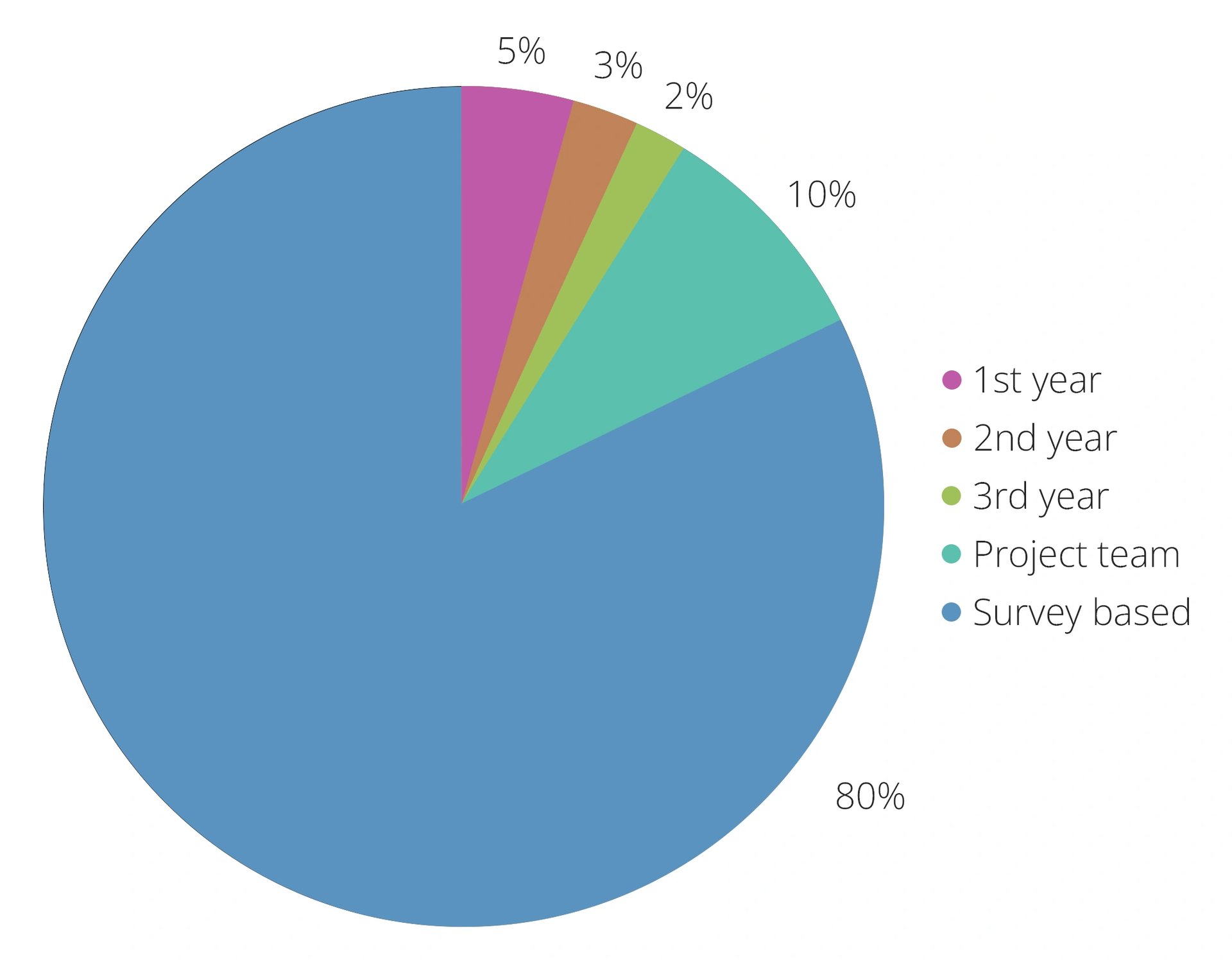
파트너십
잘못된 내용이 있나요?
